Place
Local leaders glean insight from Atlanta developments
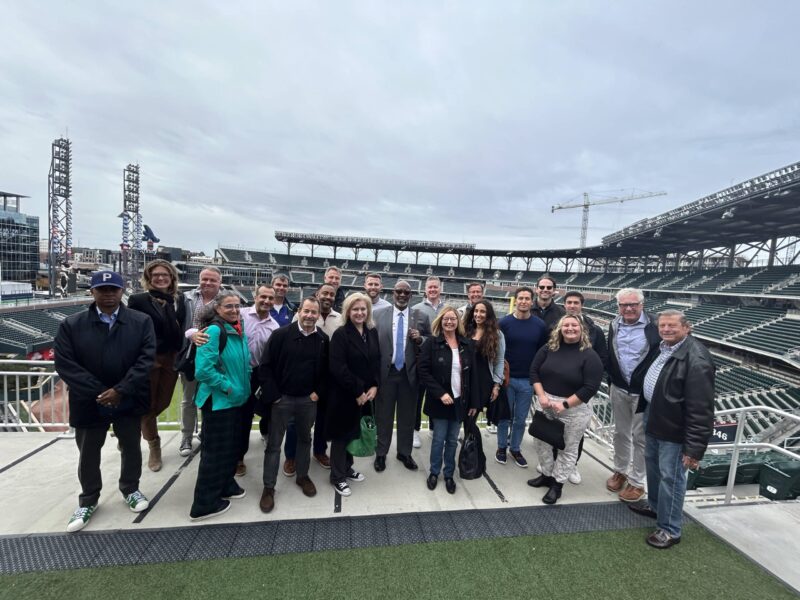
Nearly two dozen civic and business leaders recently toured The Battery Atlanta, Truist Park and the Atlanta Beltline – three prominent projects with St. Petersburg similarities.
St. Petersburg’s planned $6.5 billion redevelopment of the Historic Gas Plant District and Tropicana Field has drawn comparisons to The Battery Atlanta. The massive mixed-use development surrounds Truist Park, home to Major League Baseball’s Atlanta Braves.
The Beltline transformed 33 miles of disused rail lines into multi-use urban trails, and its surrounding developments have generated $10 billion in economic impact. Many local stakeholders believe they can recreate some of that success along the Pinellas Trail.
The St. Petersburg Downtown Partnership hosted the trip Nov. 15. Mayor Ken Welch was among the 22 attendees and said he saw several parallels between the Battery and Gas Plant.
“I think we can learn a lot,” Welch told the Catalyst. “But there’s some opportunities for us, as well, that are a little bit different than what they had in Atlanta.”
A senior vice president for the Braves led a tour of what Welch called a beautiful ballpark and mixed-use development. He appreciated hearing how the site evolved through extensive planning.
Welch said an oil pipeline that once ran through the Battery remains in another spot, one of many similarities with the Gas Plant.
“The Battery is not even in the City of Atlanta,” Welch said. “But this (the Gas Plant) will be integral to downtown St. Pete and walkable … I think we can do something that’s true to St. Pete, and I think it’ll be very exciting for our folks.”
Councilmember Gina Driscoll called the initiative “the perfect benchmarking trip.” She said Truist Park’s views and multiple ways to experience a game – including food and beverage table service – were among the stadium’s highlights.
Driscoll also noted that a grassy area outside the ballpark featured a stage and an expansive screen for fans to watch away games. It also provides another option during marquee home matchups.
“It was great to go and see a baseball stadium that many feel was truly done right, and draw inspiration from that,” Driscoll added. “I definitely believe our new stadium is going to be a whole new experience for Rays fans.”
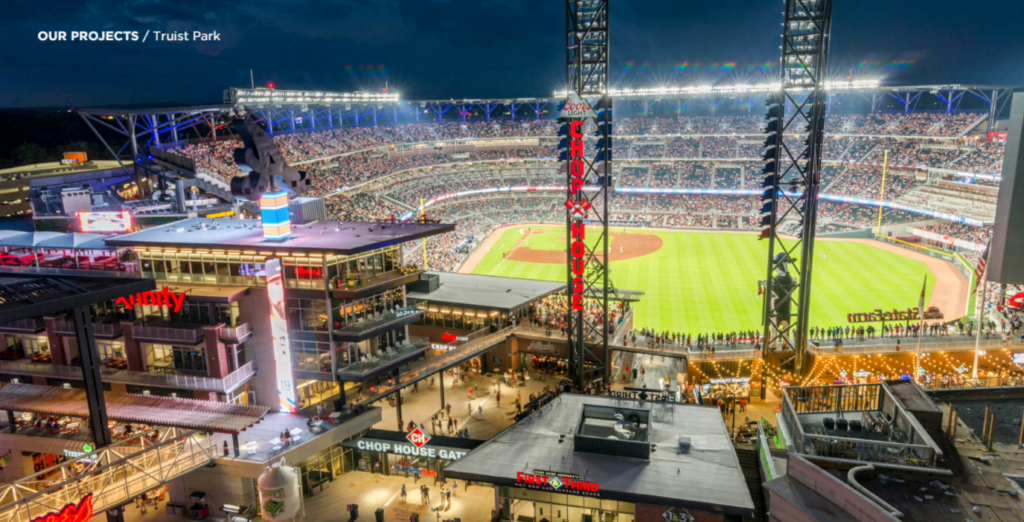
Populous will provide architectural design services on a new Tampa Bay Rays ballpark. The firm also worked on Truist Field (above), home to the Atlanta Braves. Screengrab.
Like Welch, Driscoll believes city officials and the Tampa Bay Rays/Hines development team can improve upon the Battery. She said the master-planned development features myriad retail and hospitality chains rather than local small businesses.
While Driscoll appreciated the careful thought put into the Battery, she said it felt overly planned rather than organic. She wants additional business and community leaders to tour the area “and see how we could do things like this in a very St. Pete way.”
Rev. J.C. Pritchett II, president of the Interdenominational Ministerial Alliance, also attended. He said his organization has monitored the Gas Plant’s fate since city officials displaced thousands of Black residents and business owners in the early 1980s.
Pritchett expressed a responsibility to ensure future generations see decades-old promises of equity and economic participation at the site fulfilled. He believes St. Petersburg’s project will surpass the Battery’s municipal impact.
“Truist Park is in the suburbs,” Pritchett said. “The Gas Plant is in the heart of a city … so that makes a big difference.”
He credited the Gas Plant’s proximity to beaches, interstates and international airports. However, Pritchett said Atlanta has a distinct advantage with its deep-pocketed corporate sponsors.
One Truist Park aspect he would most like to see in St. Pete is its tribute to Black baseball pioneers and the Negro League. Pritchett said that is “something I think the Rays/Hines development team should be doing in conjunction with the Woodson Museum around the time in sports history where African Americans were not treated well.”
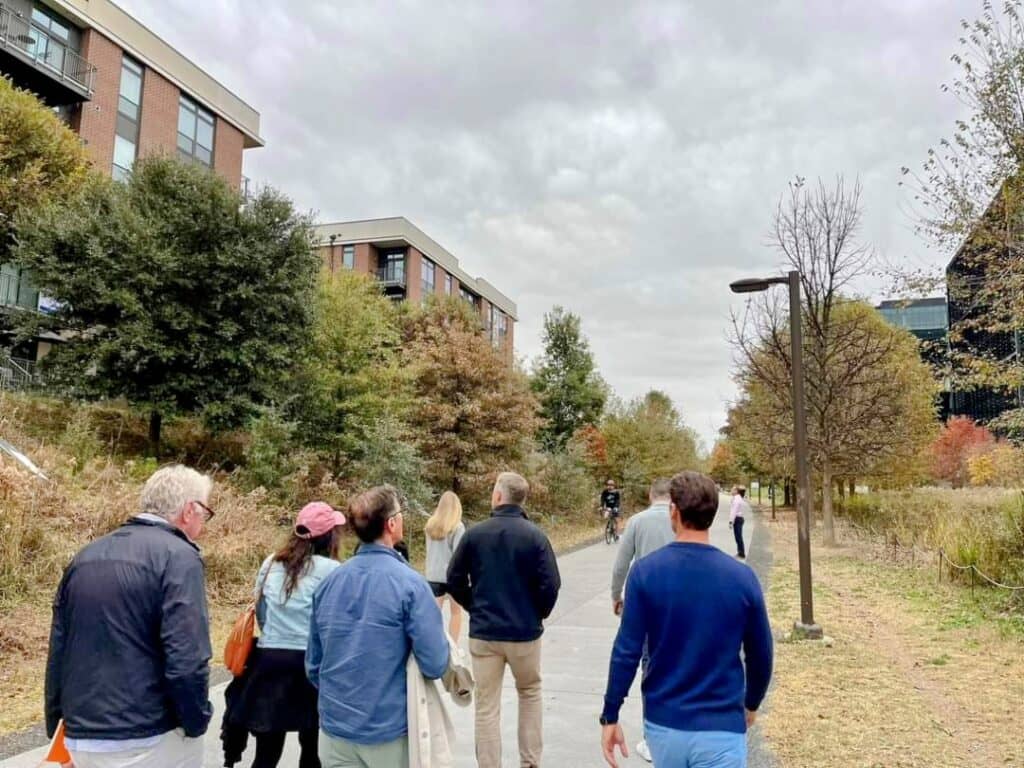
Attendees walk along the Atlanta BeltLine’s 33 miles of mixed-use trails that have revitalized underused parts of the city. Photo provided.
The Atlanta BeltLine Partnership launched in 2005 to oversee what tourism officials call the city’s “most iconic feature.” What was once dilapidated old factories and weeds has 50,000 permanent jobs, 5,600 affordable workforce housing units and 46 miles of improved streetscapes.
St. Petersburg zoning officials toured the Beltline’s most prominent redevelopment, the Ponce City Market. The massive complex once served as a Sears Roebuck hub along the adjacent railway.
Welch, Driscoll and Pritchett called it a trip highlight and noted its small business focus. Driscoll believes the ArtsXchange campus in the Warehouse Arts District is proof of the local adaptive reuses possible along the Pinellas Trail in St. Petersburg.
When combined with new projects spurred by the implementation of transit-oriented development (TOD) zoning, she said, “We’re going to see the trail becoming a true centerpiece of the neighborhoods that surround it.”
Jason Mathis, CEO of the Downtown Partnership, said local stakeholders can use projects in other cities as a guide when making urban development decisions.
“Touring Truist Park and the Battery with the Atlanta Braves helped understand the relationship between an entertainment district and adjacent ballpark,” he added. “Walking the BeltLine with Atlanta-based developers showed us zoning and design decisions that can help us make better choices about the Pinellas Trail.
“I think we saw ideas we may want to duplicate and some things we would want to do differently in St. Pete.”




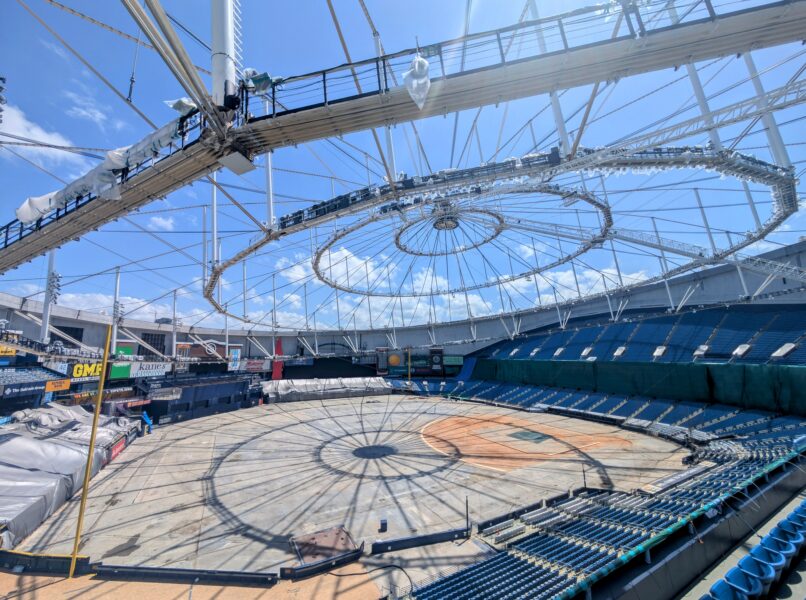
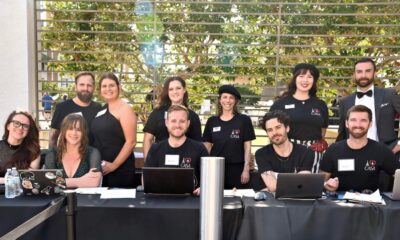

Charlie Guy
December 1, 2023at10:28 am
Victoria, we certainly agree with you regarding the endless possibilities while visiting not only St Petersburg, The Sunshine City, but all of our exciting & fun Tampa Bay to Gulf of Mexico Pinellas Peninsula!!
For residents in our historically excluded communities (Gas Plant & THE Deuces Live), we must, however, also provide additional safe, free, and/or low-cost transportation connections with our many City museums, the Warehouse Arts District, schools parks, recreation centers, libraries, social & medical services, & churches……..
……and finally with job training & access to the City’s employment cluster centers:
Gulf Beaches Warehouse Arts District Downtown Bayfront Skyway Marina District
Having spent the last 3 years in our volunteer community engagement & planning endeavor, our Deuces Bikeway, the Sunshine Greenway intersection with The Deuces Live downtown business district & neighborhood corridor (22nd St So), will serve as Pinellas Peninsula’s junction for ultimately seamlessly interconnecting the 75 mile Pinellas Trail Loop (Fred Marquis, Duke Energy, & North Bay trails) & the Skyway Bridge related trails (12 miles) with the FL Coast to Coast Trail (250 miles).
By immediately aggregating these existing assets, 55% of our 13-mile multimodal sustainable transportation loop interlinking seamlessly our City’s existing bikeways & bike trails will be completed while more effectively embracing the current US Department of Transportation grant preference requirements for multimodal transportation solutions that will substantially improve connectivity & equity for historically excluded communities.
Charlie Guy
Victoria R
November 29, 2023at3:53 pm
I visited Atlanta a few weeks ago & my hotel (shout out to the Hotel Clermont, a great example of adaptive re-use) was a few blocks from the Beltline and the fabulous Ponce City Market. I used the Beltline to walk to the High Museum about 2 miles away. On my way back, it was easy to step off the Beltline & into a Trader Joe’s for wine and snacks.
To emulate the Beltline, the Pinellas Trail will need A LOT of easily-accessed stores, restaurants, and services (i.e., I passed multiple veterinarians, pet supply, and doggie daycare businesses—not to mention numerous apartment buildings, coffee shops, and bars—on my trip to the museum). And, it will need to connect different parts of the city for those who prefer (or need) to bike or walk to amenities, not just be a pleasant place to “take a walk.”
In Atlanta, I was able to walk from the Poncey-Highlands neighborhood to Midtown and Piedmont Park.